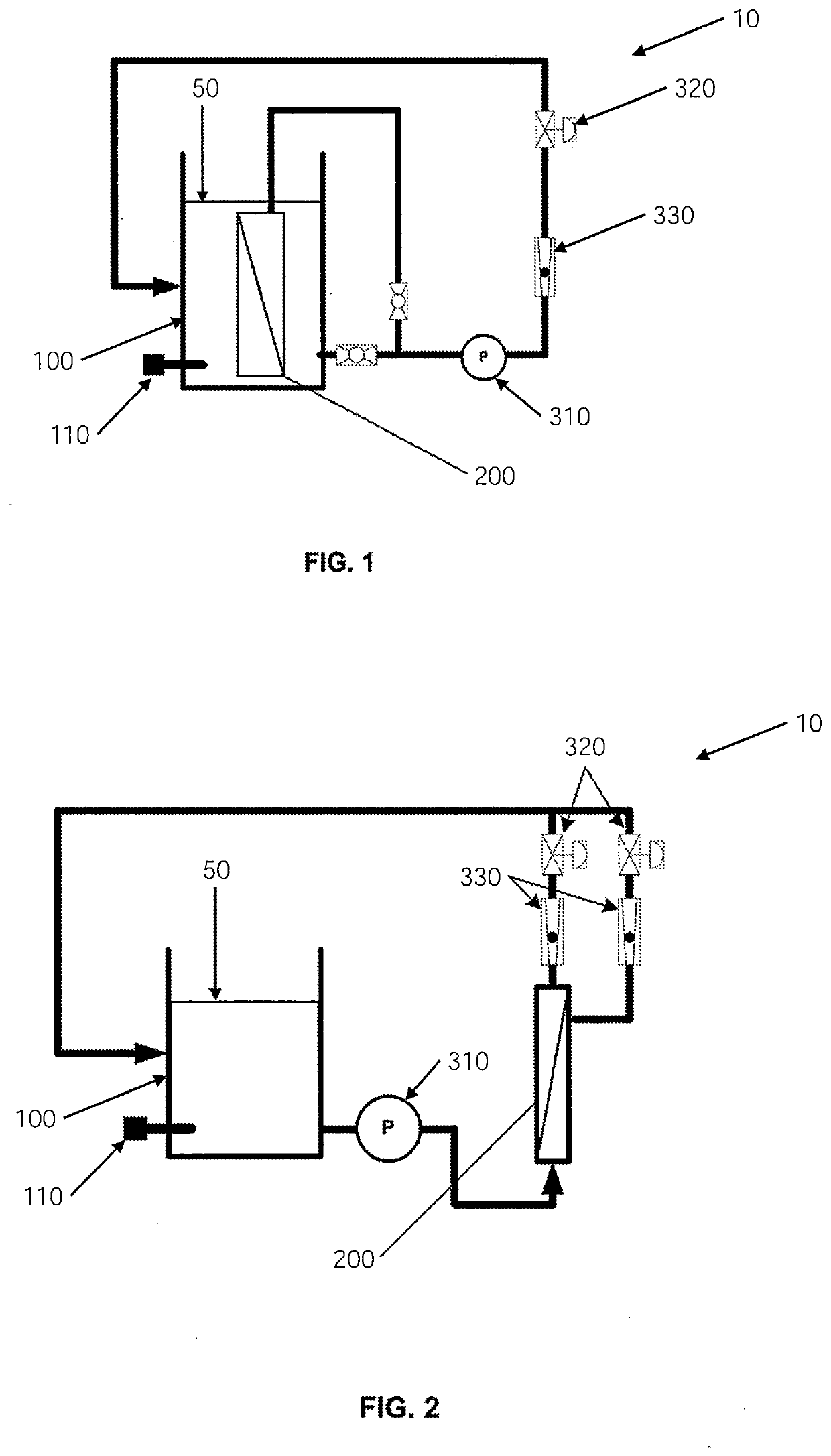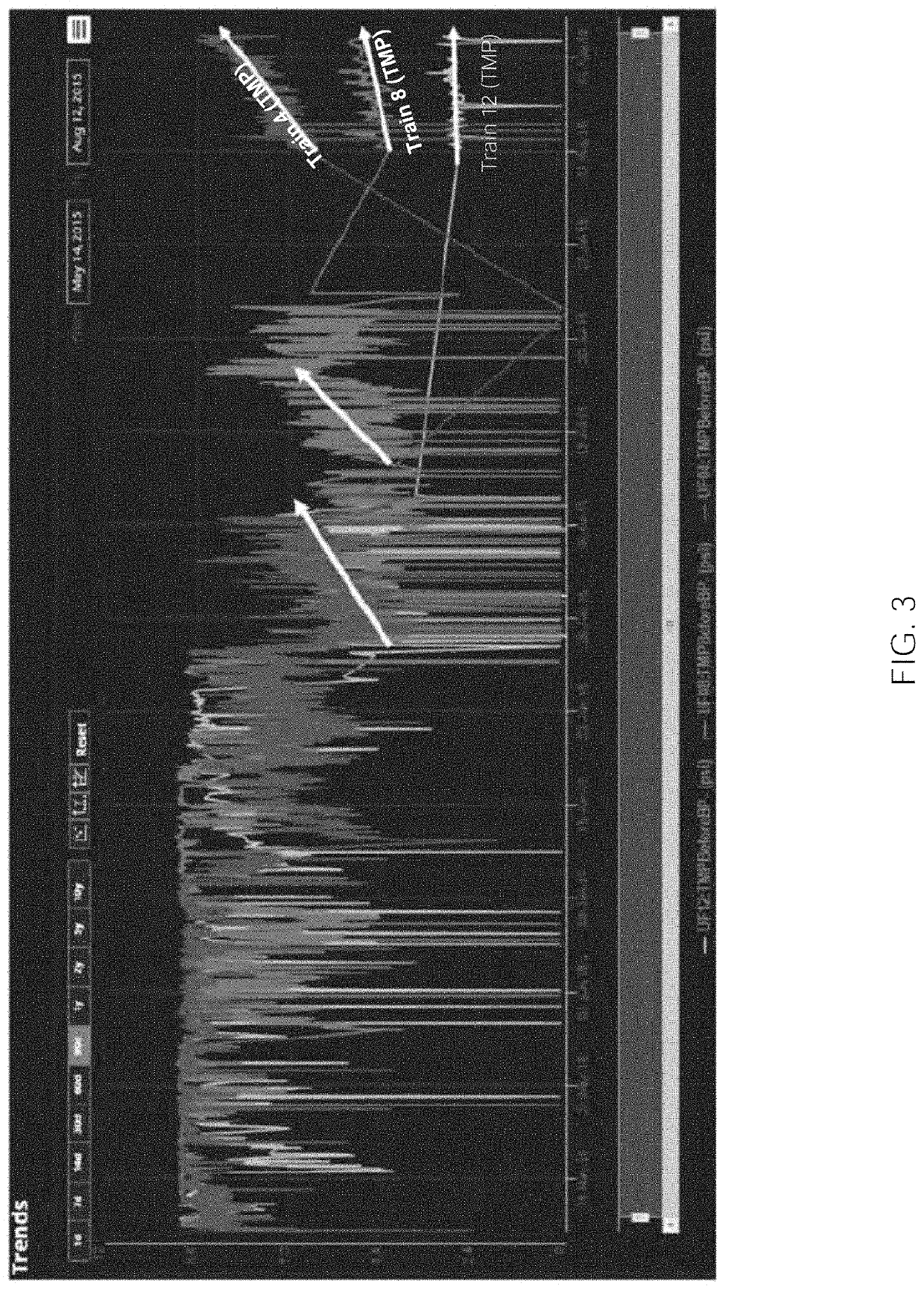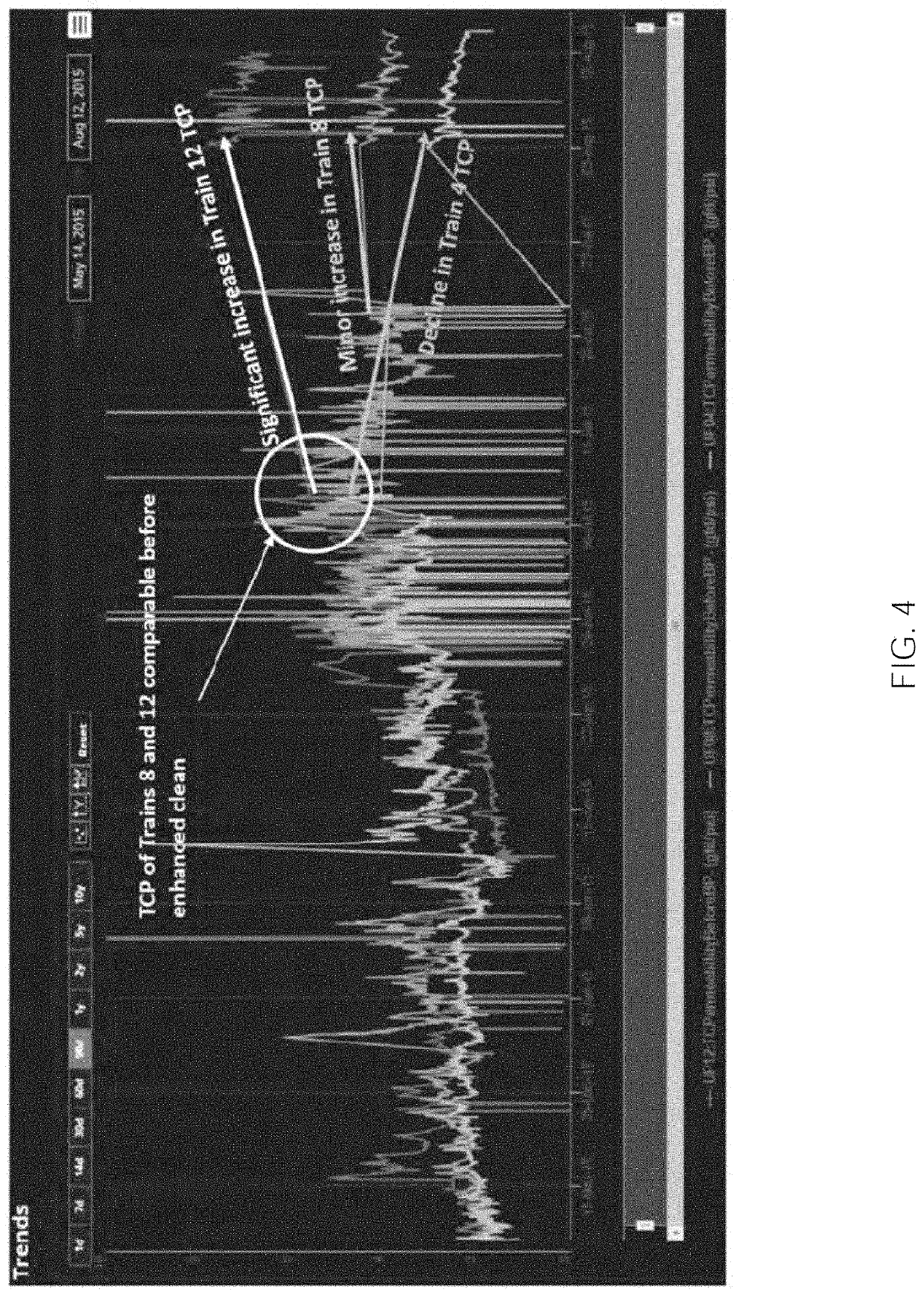Method of cleaning microfiltration and ultrafiltration membranes
a technology of ultrafiltration membrane and microfiltration, which is applied in the direction of membranes, inorganic non-surface active detergent compositions, detergent compositions, etc., can solve the problems of increasing the cost of filtration, and gradually reducing the performance of the membrane, so as to avoid potential membrane damage
- Summary
- Abstract
- Description
- Claims
- Application Information
AI Technical Summary
Benefits of technology
Problems solved by technology
Method used
Image
Examples
Embodiment Construction
[0038]As required, a detailed embodiment of the present invention is disclosed herein; however, it is to be understood that the disclosed embodiment is merely exemplary of the principles of the invention, which may be embodied in various forms. Therefore, specific structural and functional details disclosed herein are not to be interpreted as limiting, but merely as a basis for the claims and as a representative basis for teaching one skilled in the art to variously employ the present invention in virtually any appropriately detailed structure.
[0039]The system 10 of the present invention includes a tank 100 that is configured to hold a volume of fluid 50. In some embodiments, the system 10 is configured to clean polymeric and / or ceramic microfiltration (MF) and / or ultrafiltration (UF) membranes, such as hollow fiber, flat-sheet, and / or tubular membranes, and / or membrane units / modules 200. Referring to FIG. 1, some embodiments of the system 10 are Clean-In-Place (“CIP”) systems and / o...
PUM
| Property | Measurement | Unit |
|---|---|---|
| ambient temperature | aaaaa | aaaaa |
| temperature | aaaaa | aaaaa |
| temperature | aaaaa | aaaaa |
Abstract
Description
Claims
Application Information
 Login to View More
Login to View More - R&D
- Intellectual Property
- Life Sciences
- Materials
- Tech Scout
- Unparalleled Data Quality
- Higher Quality Content
- 60% Fewer Hallucinations
Browse by: Latest US Patents, China's latest patents, Technical Efficacy Thesaurus, Application Domain, Technology Topic, Popular Technical Reports.
© 2025 PatSnap. All rights reserved.Legal|Privacy policy|Modern Slavery Act Transparency Statement|Sitemap|About US| Contact US: help@patsnap.com



